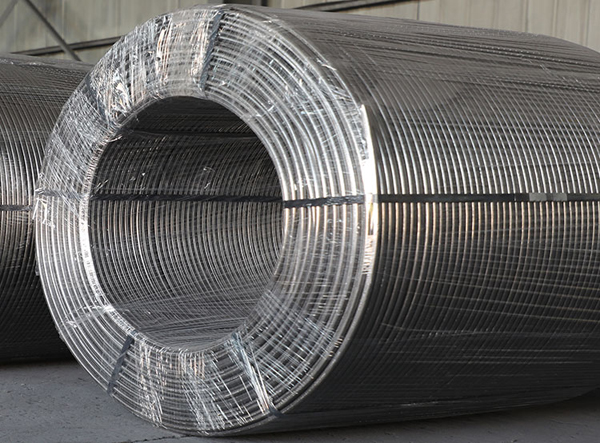
Calcium cored wire is a material that is made up of solid calcium. This type of wire has a diameter of 8 millimeters, and its thickness is 0.010 inch. It is surrounded by a mild steel jacket and an aluminum strip. The wire is then wound into continuous coils of sufficient length to perform testing.
The solid pure calcium cored wire has a high tensile strength and high toughness. It can be used for deoxidation in steel making. The wires are produced from an ingot of pure calcium and are wrapped with a cold rolled steel strip. They have a uniform diameter and are resistant to breaking. This makes them more suitable for precise feeding.
Solid calcium cored wire has a high density and is easy to detect because the surface area is smaller. This type of wire is also more resistant to oxidation, which can damage molten steel. Its calcium treatment ensures that it will not contain any other oxides. The solid calcium wire is wrapped in a thick steel strip to ensure that it does not slip during feeding.

One of the benefits of using calcium cored wire is that it allows higher travel speeds than solid wires while maintaining the same weld size. This can have a positive impact on productivity. Because labor is the most expensive part of welding operations, even a small reduction in cycle time can mean big savings. Another benefit is that cored wires are more flexible, which means that they can be used for a variety of applications.
Calcium cored wire has some distinct advantages, including the ability to reduce calcium oxide inclusions in molten steel. It can also promote the formation of eutectic pellets and nodular cast iron, thereby increasing mass density and improving cast iron quality.
Problems with calcium cored wire are largely related to its production process. It is a challenging process because of its low density, low melting temperature, and high vapour pressure. To overcome these difficulties, special additive techniques were developed, including cored wire injection. In this method, a continuous steel tube is filled with calcium bearing powder.
Cored wire containing calcium is used in the production of cast iron, inoculation treatment, and desulfurization. The standard of cored wire used in these processes varies greatly. It is important to consider the feeding speed as it greatly influences the absorption rate of calcium. When fed too slowly or too fast, calcium will be sucked out of the wire. In addition, the wire has to be fed to a specified depth, before it melts. The depth must be high enough so that the calcium bubbles will experience high hydrostatic pressure before floating to the molten steel.
Calcium cored wire is one of the most popular types of steel wire. Calcium is an effective deoxidizer, but its low melting point prevents it from reaching the deeper position in steel. Calcium powder and metal particles can cause combustion at high temperatures. As a result, they cannot reach the upper position in molten steel. In contrast, calcium cored wire has the ability to purify steel by creating a chemical reaction with steel and oxygen.
Calcium cored wire is used in several industries, including cast iron and desulfurization. It is injected into the steel melt using a wire injection system. The process is designed to increase the recovery of Ca, while also reducing costs. It is cheaper to use than virgin Ca and offers consistent quality. The wire is typically packaged with a plastic steel belt and protected by argon gas. It is then packed in four-drum drums per wooden pallet.
The manufacturing process for calcium cored wire is a multi-step process. This process involves a number of steps from the beginning to the end. The first step involves calculating the length of wire that will be filled. The next step involves adding filling powder to the wire. Once the powder is added, the steel mill operators must determine how much wire to fill in each section.
The raw material for calcium cored wire is calcium silicate powder. This is combined with steel strips to form the core and outer skin. This calcium cored wire is then pressed through a wire pressing machine. During this process, special attention must be paid to the steel strip being completely covered. This will help prevent leaks and problems from occurring in the cored wire.

Write a Message